What is a potential equalization system and why is it needed
Appointment
First, let's talk about why you need a soup in the apartment. The fact is that all metal objects are current conductors, which is known from the school course of physics. In apartments, such objects are cold and hot water pipes, a heated towel rail, a drain, a heating system, electrical appliance cases, and even ventilation ducts. As you know, metal pipes and other communal utilities are interconnected. If a difference in electrical potentials is formed between two metal objects, for example, a shower cabin and a heating battery, then a person touching two objects at the same time can be extremely dangerous. This is due to the fact that the body will act as a jumper between communications, and the current will flow through a person from an object with great potential to that which is less.
A typical case of this danger is the appearance of different potentials on the water and sewer pipes. If current leak will occur on water pipes, when you bathe in the bathroom, the likelihood of electric shock will be extremely high. The reason for this is the discharge of water and the simultaneous touch of the tap. Water in this case will become a conductor from the sewage system to water pipes, and you will become this jumper. You can clearly see the dangerous situation in the picture below:
To avoid such a problem, we just need a potential equalization system in the apartment.
Varieties
There is a basic system of equalization of potentials (OSUP) and additional (DSUP).
According to Chapter 1.7 of the EMP (p.1.7.82), the main potential equalization system in electrical installations up to 1 kV should connect the following conductive parts (see the figure below):
- zero protective PE- or PEN-conductor of the supply line in the TN system;
- grounding conductor connected to the grounding device of the electrical installation in systems IT and TT ,
- a grounding conductor connected to a grounding conductor for re-grounding at the entrance to the building (if there is a grounding conductor);
- metal pipes of communications included in the building: hot and cold water, sewage, heating, gas, etc.
When all these elements were combined, one could not be afraid of the danger of the emergence of different potentials in the past years, but today the situation is different.This is due to the fact that recently, apartment owners have switched from metal heating pipes to plastic, or rather polypropylene. As a result, the plastic breaks the protective chain and a potential difference can occur between various communications in the bathroom, for example, plumbing and heated towel rails.
Another problem of using only OSUP - over a large length of communications (multi-storey buildings), the electric potential of the same pipe on the first and tenth floors will differ significantly, which is also a dangerous situation. That is why, together with the main EMS, they create an additional, individually for each apartment.
An additional potential equalization system is located in the bathroom and combines the following elements:
- body bath or shower;
- heated towel rail;
- water and gas pipes;
- sewage system;
- ventilation if a metal box comes into the room;
- zero protective conductors in the TN system and protective grounding conductors in IT and TT systems, including protective conductors of plug sockets (ПУЭ item 1.7.83).
Each system object must be connected by a separate single-core copper wire, the other end of which is displayed in the potential equalization box (PLC), as shown in the photo below:
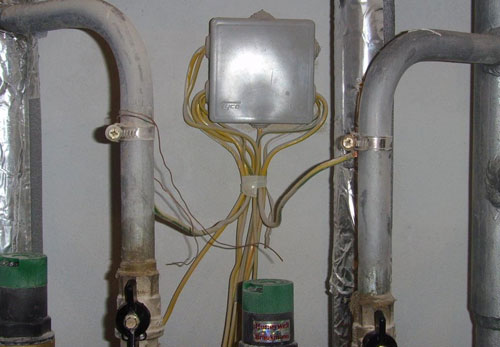
Immediately draw your attention to several requirements that apply to an additional potential equalization system in accordance with the rules and regulations PUE:
- It is forbidden to connect DCS elements with a loop.
- It is strictly forbidden to create an additional control system if the apartment does not have a grounding circuit (grounding is performed according to the system TN-C).
- DCS should be inextricable throughout the entire length from the terminal box in the bathroom to the apartment panel. The inclusion in the circuit of any switching equipment is prohibited.
So we examined what the main and additional potential equalization system consists of. If you do not have a local protective circuit in your apartment, then we will tell you how to make a self-propelled control system yourself.
We carry out installation
Installation of additional EMS (it is also called local) is easy to perform. It is advisable to do such work at the stage of overhaul, as the wire from the box (PMC) to the shield must be kept in the floor screed. So, first you need to prepare the following materials:
- Terminal box with a special copper bus - ШДУП, as in the photo below.
- Single-core wire made of copper, cross section 2.5; 4 and 6 mm2. Recommended use wire PV-1 and PV-3.
- Fixing systems - clamps, bolts, contact petals. Required to connect the conductors of the potential equalization system to pipes and metal housings.
Having prepared such a small set of DSUP, you can proceed to installation. First of all, it is recommended to draw up a potential equalization scheme, according to which you will connect all the elements. Also on the diagram you can sketch in what places the wire will pass from the terminal box to the grounding bus in the shield. You can see examples of projects for an apartment on the plans below:
After that, you need to prepare the communications for the connection - to clean a small area under the pipe clamp to a metallic sheen. This is necessary so that the contact is reliable, and the potential equalization system works in a dangerous situation.
Next, you need to connect each element with a separate wire. If in areas there is no probability of mechanical damage to the wire, you can use a 2.5 mm conductor for equalization2. When the probability of damage is, albeit insignificant, it is better to play it safe and use a wire with a cross section of 4 squares. All wires are inserted in the PMC and securely fixed to the bus. By the way, it is recommended to choose the terminal box for installation in the bathroom with IP degree of protection 54 or higher. 6 mm wire is drawn from the bus2to be laid to the housing shield.There is also a specific requirement here - this conductor should not cross other cable lines, for example, if you decide conduct electrical wiring in the floor.
At the end, the wire is connected to the grounding bus in the shield, on which the installation of the additional potential equalization system is completed. We recommend you to play it safe and call an electrician so that he checks the system’s performance with a tester and a visual inspection!
That was all I wanted to tell you about how to make a DCM in the bathroom with your own hands. We hope the information and diagrams were clear.
It will be interesting to read:

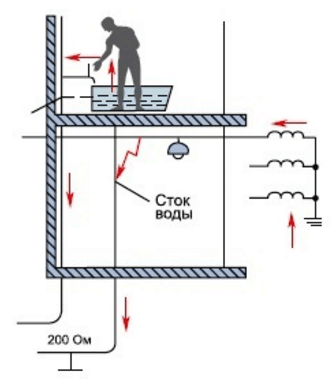
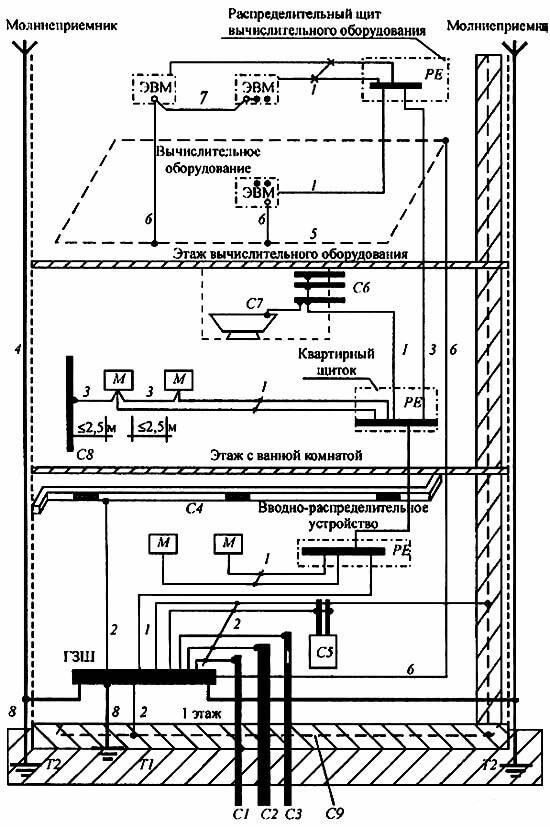
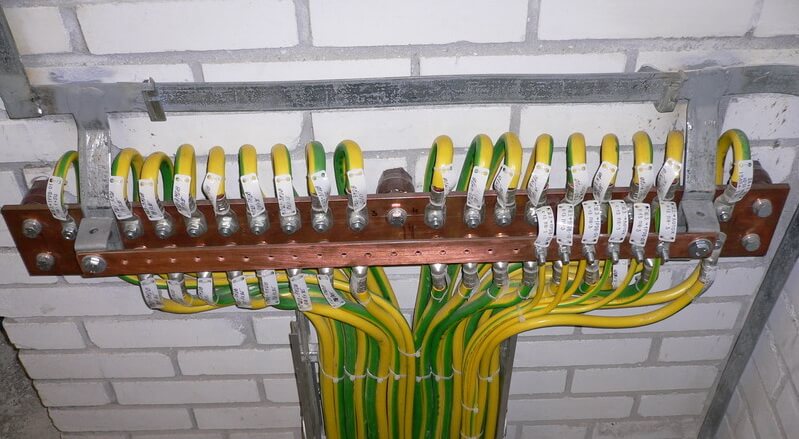
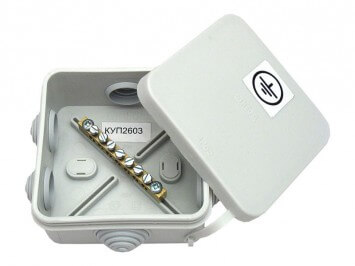
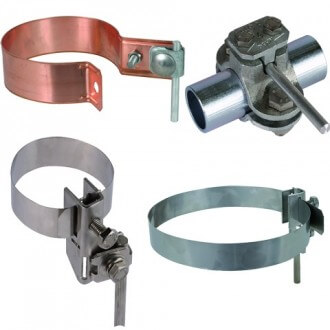
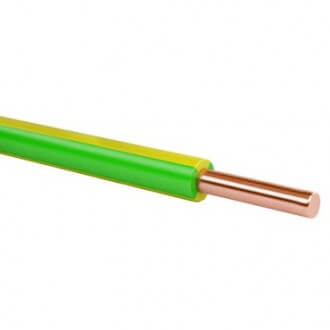
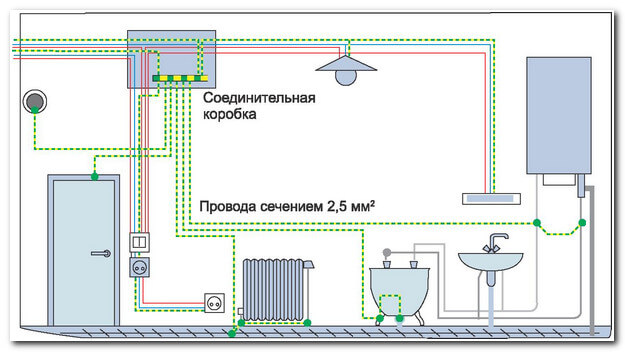
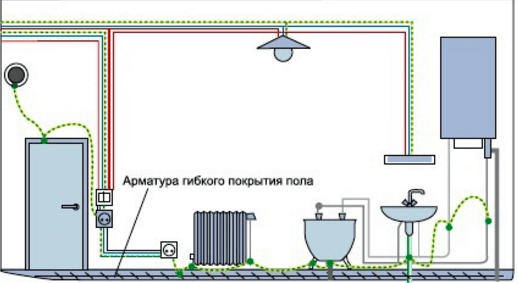

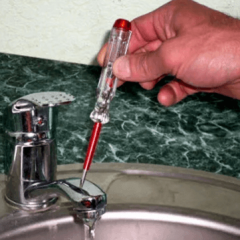
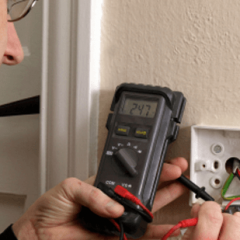
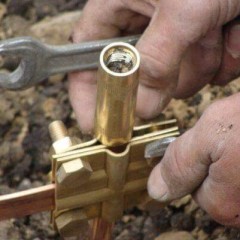

Good hour!
Tell me, is there a need for a DCAP if all consumers in the bathroom are connected via sockets with an earthing contact, and those in turn are connected to the earthing bus in the panel?
Yes there is. PUE 7.1.88. An additional potential equalization system must be connected to all accessible open conductive parts of stationary electrical installations, third-party conductive parts and zero protective conductors of all electrical equipment (including plug sockets).
For bathrooms and showers, an additional potential equalization system is mandatory and should include, inter alia, the connection of third-party conductive parts that extend outside the premises. If there is no electrical equipment with zero protective conductors connected to the potential equalization system, then the potential equalization system should be connected to the PE bus (terminal) at the input. Floor heating elements must be covered with a grounded metal mesh or a grounded metal shell connected to a potential equalization system. As additional protection
for heating elements it is recommended to use an RCD for currents up to 30 mA.
It is not allowed to use local equalization systems for saunas, bathrooms and showers.
Pictures are misleading - it is impossible to write in a loop, but in the last picture a loop is obviously used ... Junction box - meaning DCS or common apartment? It is written that the control system must be connected to the apartment panel, and in the picture to it both sockets and lighting are suitable ....
I would be very grateful if you explain why it is impossible to use local equalization of potential systems (i.e. DCES) for saunas, bathtubs and showers according to the EMP;
Do not mislead people! According to the PUE 7.1.88, it is not allowed to use LOCAL SOUP in the listed premises, and not additional! The local system does not connect to the ground. My opinion is that the ban is connected with the fact that in the case of dangerous voltage in the case of using a local control system, all connected objects will be energized!
As for the daisy chain connection of the earth, the bans in the documents I could not find, but there are requirements to ensure the continuity of the neutral conductor.
The point is that it is better to install a potential equalization box (PLC) and ground everything from it with separate conductors. But it is also possible to connect with a loop without breaking the wire, for example, removing insulation on a section of the wire and forming a “ring” for screwing, soldering and branching.
DSPM is connected to the earth, right? So why did you find fault with the fact that "earth" wires of electrical equipment are connected to the same earth?
The same PUE 7.1.88 says:
“To the potential equalization system must be connected all accessible open conductive parts of stationary electrical installations, third-party conductive parts and zero protective conductors of all electrical equipment (including plug sockets).”
I repeat Victor’s question:
"I would be very grateful if you explain why it is impossible to use local equalization systems for potential equalization (ie DCAP) for saunas, bathtubs and showers according to the EMP?"
Answered Victor.
Let's look at what the "System of local equalization of potentials", "OSUP", "DSUP", and what is connected to. What about GZSch, what about the PE conductor obtained after the separation of PEN into PE and N in the NT-C power supply system reduced to NT-C-S after the separation of PEN using an example in a private house. Too many names, and many opinions, which causes confusion.
It turns out that on your site one thing is different on the other ... I would like an article with specific justifications and excerpts from the PUE and their comments on each item given in the article, if the article certainly exists. Then I think there will be no disagreement with publications from other sites and unnecessary questions from readers of this resource.
And if the bathroom is acrylic, then what is grounded?